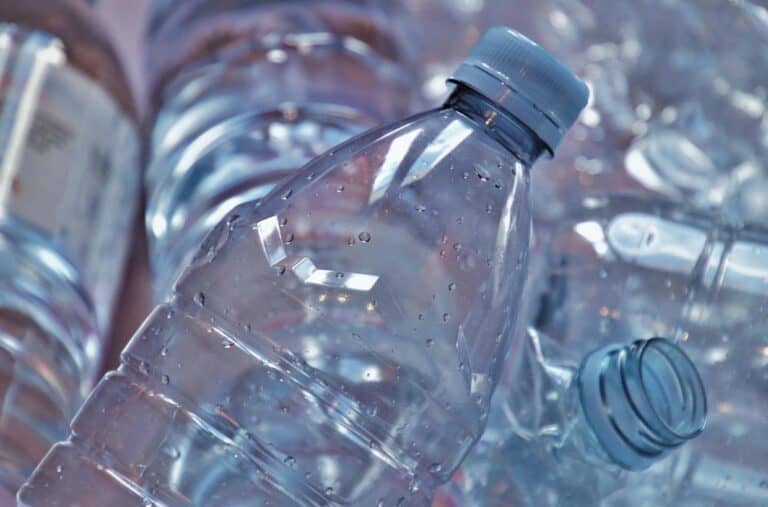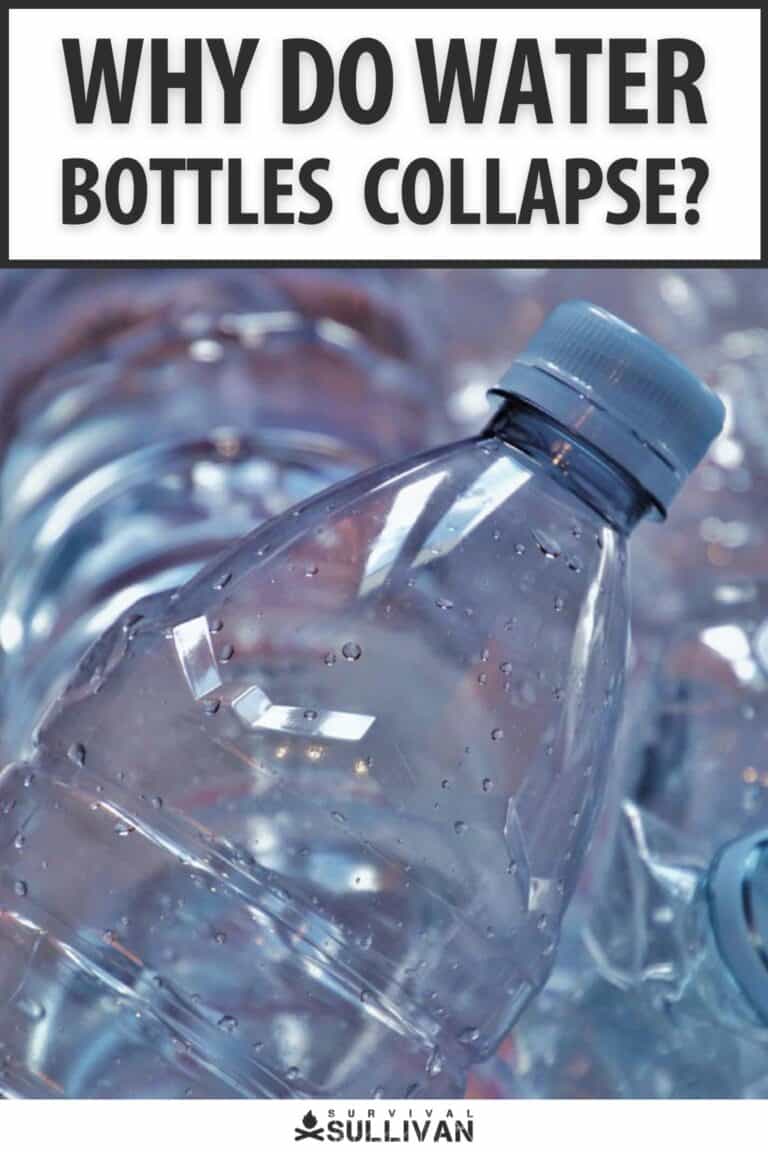Have you ever noticed that bottled water bottles seem to collapse over time? It’s a strange phenomenon, but one that has been observed by many people.

You have a sealed bottle of water, and seemingly for no reason at all it starts to implode in on itself, like it is turning inside out. How is it possible? Why does it happen? Why do water bottles collapse?
Water bottles collapse because of a process called osmosis. Over time, the water molecules on the inside of the bottle start to move out through the walls of the bottle, into the air.
This happens because the air on the outside of the bottle has a lower concentration of water molecules than on the inside. As more and more water molecules escape from the bottle, they create a vacuum inside the bottle. This vacuum pulls on the walls of the bottle, causing them to collapse inward.
So there you have it! The next time you notice your water bottle starting to collapse, you can impress your friends with your expert knowledge.
But, as with most things, there is much more to learn beyond this simple answer. In this article, we will further explore why water bottles collapse. Keep reading for more information!
What Is Osmosis and Why Does It Cause Water Bottles To Collapse?
Osmosis is a process that occurs when molecules of a solvent (in this case, water) move from an area of low concentration to an area of high concentration through a semi-permeable membrane.
This process happens because the molecules are trying to balance the concentrations on both sides of the membrane. When there is a higher concentration of molecules on one side, they will move to the other side until the concentrations are equal.
The Water Bottle Is Sealed, So Why Does This Happen?
Even though the bottle is sealed, there is still a small amount of air inside the bottle. This air has a lower concentration of water molecules than the water inside the bottle.
So, over time, the water molecules will start to move out of the bottle and into the air. This process is accelerated by heat and humidity, which cause more water molecules to evaporate from the surface of the water.
The pressure differential between the inside and outside of the bottle also plays a role in causing water bottles to collapse.
When the air pressure outside the bottle is higher than the pressure inside, it pushes on the walls of the bottle, causing them to collapse inward. This can happen at high altitudes, or if you seal a bottle of
How Does Altitude Pressure Differential Play Into the Equation?
One other factor that can cause water bottles to collapse is because of pressure differential at changing altitudes. As we all know, air pressure decreases with altitude.
This means that there are fewer air molecules per unit of volume at higher altitudes. This decrease in air pressure also causes a decrease in the concentration of water molecules.
When the water bottle is at a higher altitude, the atmospheric pressure is pushing down on the water molecules less than it is at lower altitudes.
This means that there are fewer molecules per unit of volume, and thus the water inside the bottle has a higher concentration than the water outside.
Since osmosis occurs when molecules move from an area of high concentration to an area of low concentration, the water molecules will start to move out of the bottle and into the air.
Sealed Bottles Inside of Sealed Coolers Are Also at Risk of Collapsing.
Similarly to the process that happens at high altitudes, if you seal a water bottle inside of a sealed cooler, the atmospheric pressure inside the cooler may be lower than the atmospheric pressure outside.
This decrease in pressure will cause the water molecules to have a higher concentration than the molecules outside of the bottle.
As a result, osmosis will occur and the water molecules will start to move out of the bottle and into the air, causing the bottle to collapse.
I myself experienced this exact phenomenon on a long, overland trip that included a sharp change in elevation, going down.
We had plenty of water and food packed in a high-end cooler, one that sealed tightly to help keep ice intact and internal temperature low.
Stopping in the lowlands after a trip of some hours, I was surprised to find half of my water bottles leaking with badly cracked seals. Talk about an oversight!
Intense Heat May Cause Bottles To Sag or Distort.
Another factor that can cause water bottles to collapse is intense heat. When the temperature of the plastic climbs, it becomes more pliable and less rigid. This means you might see obvious damage like a tilting neck, dent or other consequences.
This is most commonly an issue when modern disposable water bottles are left in a vehicle on a hot, clear, sunny day but it may also happen when the bottle is left on or near a hot, radiant surface.
Disposable Water Bottles Are Made of Thin, Delicate Plastic.
The thickness of the bottle walls also contribute significantly to this issue. In an effort to save resources, increase profits and pander to people who claim to care about the environmental impact of plastic, manufacturers of such water bottles have made them increasingly thin over time, to the point where an empty bottle will crumple like paper when empty.
This does nothing to help the water bottle’s structural integrity and only serves to make the problem worse.
By being more vulnerable to various forces associated with the issue it is more likely that bottles will collapse quicker and under relatively mild circumstances.
How Can You Prevent Water Bottles From Collapsing?
There are a few ways that you can prevent your water bottles from collapsing. First, simply open and drink them in a reasonable amount of time. Empty, open bottles won’t collapse, and it won’t matter even if they did!
One way to help prevent the issue in sealed bottles is to store them in a cool, dry place. This will minimize the amount of evaporation that occurs, and thus the amount of osmosis.
You can also buy bottles that are made out of thicker plastic or even cans of drinking water.
These containers have thicker walls and are often made of metal or glass. However, they are usually more expensive.
Lastly, if you know you’ll be drinking the water in the near future, just crack the seal on the bottle to help equalize the pressure when making significant changes in elevation, and especially when storing them inside an airtight cooler during the same travels.
While it may seem like a silly problem, it’s one that can be easily prevented.


Tom Marlowe practically grew up with a gun in his hand, and has held all kinds of jobs in the gun industry: range safety, sales, instruction and consulting, Tom has the experience to help civilian shooters figure out what will work best for them.
